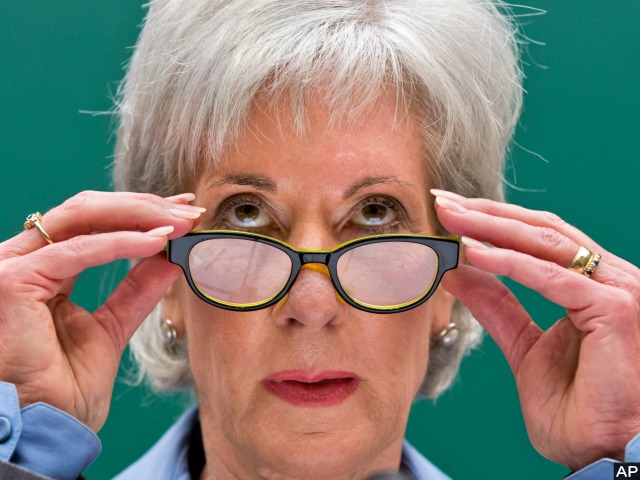In 2009, Andrew F. Krepinevich, president of the prestigious Center for Strategic and Budgetary Assessments, wrote a sobering book, “Seven Deadly Scenarios.” A chapter titled, “Pandemic,” describes the horrific impact of an influenza pandemic on an unprepared United States, and reminds us that the misnamed “Spanish Flu” of 1918 actually began in China before it circled the globe to kill 100 million people. Over 575,000 Americans died before that pandemic ended.
This April, only four years after “Seven Deadly Scenarios” was published, the World Health Organization announced that a new and deadly avian influenza virus (H7N9) has arisen in 10 provinces and cities of China. Just days later the Centers For Disease Control said it was “fairly worried” about the new virus, and that its influenza division had begun work on a seed vaccine. Dr. Michael Shaw, a CDC laboratory director, said if plans worked smoothly they could have it ready to send to vaccine manufacturers within four weeks.
Shortly afterwards, CDC said, “Most concerning is the pandemic potential of this virus.” Director Dr. Tom Frieden added, “The world faces a perfect storm of vulnerability,” and, “nothing has the potential to kill more people than influenza.”
Meantime, and despite China slaughtering thousands of chickens, ducks and pigeons in markets, the outbreak of H7N9 surged in April. There were few cases during the summer, but experts warned the threat had not passed, and with colder weather it would return. They were right. Last week, two new cases appeared, bringing the total to 137 confirmed cases and 45 deaths.
Flu season has begun in America and China, and despite that promise by CDC of an early vaccine and warnings the lethal disease is capable of causing a global pandemic, there is still no vaccine available or a timetable to produce the needed stockpile. We are advised that technical problems with formulating an effective vaccine have delayed production.
Nevertheless, the good news is that vigorous actions were taken early by Congress and pharmaceutical companies and a vaccine is now ready for production. The bad news is Secretary Kathleen Sebelius, head of the Department of Human Health and Services (HHS), has again fallen asleep at the wheel.
In contrast, cooperation between America’s CDC and China’s CDC has been intense, with continuous exchanges of vital information. Clinical vaccine testing has begun by the National Institute of Health. And after intense study, a concerned Congress authorized funding, under the Pandemic All Hazards Preparedness Reauthorization Act, for HHS to pursue vaccine production and to provide individual doses for biothreat pathogens like H7N9 for the U.S. Strategic Stockpile.
By August, HHS – anticipating large production orders – allocated some $100 million to Novavax, Sanofi Pasteur, Novartis, and MedImmune, to develop vaccine test batches. Four more companies worked on H7N9: Canada’s GSK, Australia’s CSL, Protein Sciences, and privately held VaxInnate. So, despite those initial technical problems, everything is now in place to provide the United States with a vaccine against an H7N9 pandemic.
Last April, Secretary Sebelius declared the H7N9 virus had “significant potential to affect national security.” Then, undoubtedly tired by explaining her Obamacare failures, she must have nodded off. The resulting lack of an HHS timeline for placing orders for H7N9 vaccine production does indeed have “potential to affect national security,” and raises serious questions: When will HHS officially order vaccine manufacturers to begin production? Once the purchase orders are issued, how long will it take to produce the vaccine? How large will the national stockpile be? Will it be large enough to protect all Americans?
I asked the Office of the HHS Assistant Secretary for Preparedness and Response for answers to those questions. I was told that “production may begin later this fall at several vaccine manufacturers.” But not when, or which companies. I was told that “… sufficient pandemic vaccine for the U.S. population (would be produced) within 6 months of the onset of an influenza pandemic,” But not the date of ‘pandemic onset.’ And I was told that 20 million vaccinations “would be purchased in advance” for first responders, health care providers, and military personnel. But not how much vaccine would be produced for the rest of the American population, or when.
While I considered those murky answers, I thought about the Spanish Flu that killed so many Americans, the Asian Flu that killed 70,000, and the Hong Kong Flu that killed 30,000 more. I thought about the Swine Flu, the Russian Flu, and the Avian Flu of 1997. Then I thought about that infected poultry in China.
The CDC knows that if the H7N9 influenza virus percolating in China finally mutates so it can be passed from person to person, the pandemic will explode out of China and be here long before HHS can put the blame on some other agency for not making enough vaccine. The thought about rogue nations and terrorists — who are working diligently to create germ weapons to use on America — crossed my mind, too. Perhaps I should have asked HHS if it has plans to defend America against a virus created in a laboratory that is 10,000 times more deadly than a virus created in a chicken.
But right now, I’d settle for knowing exactly when HHS will stop making bureaucratic excuses and start protecting America. That vaccine must be ready to stop the H7N9 pandemic when it gets off a plane at Dulles Airport.

COMMENTS
Please let us know if you're having issues with commenting.